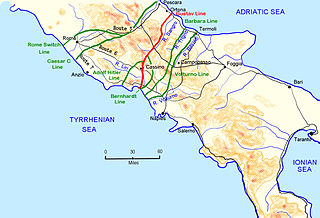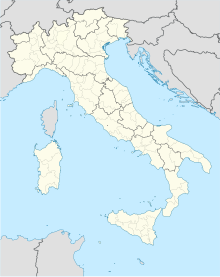
The Commandos, also known as the British Commandos, were formed during the Second World War in June 1940, following a request from the Prime Minister of the United Kingdom, Winston Churchill, for a force that could carry out raids against German-occupied Europe. Initially drawn from within the British Army from soldiers who volunteered for the Special Service Brigade, the Commandos' ranks would eventually be filled by members of all branches of the British Armed Forces and a number of foreign volunteers from German-occupied countries. By the end of the war 25,000 men had passed through the Commando course at Achnacarry. This total includes not only the British volunteers, but volunteers from Greece, France, Belgium, Netherlands, Canada, Norway, Poland, and the United States Army Rangers and US Marine Corps Raiders, which were modelled on the Commandos.

No. 3 Commando was a battalion-sized Commando unit raised by the British Army during the Second World War. Formed in July 1940 from volunteers for special service, it was the first such unit to carry the title of "Commando". Shortly afterwards the unit was involved in a largely unsuccessful raid upon the German-occupied Channel Island of Guernsey.

The Volturno Line was a German defensive position in Italy during the Italian Campaign of World War II.

Termoli is a town and comune (municipality) on the south Adriatic coast of Italy, in the province of Campobasso, region of Molise. It has a population of around 32,000, having expanded quickly after World War II, and it is a local resort town known for its beaches and old fortifications. Once it was known only as a fishing port, but in the new millennium it is a favourite resort for Italian families.

Sir John Anthony Holt Saunders, CBE, DSO, MC was chairman of The Hongkong and Shanghai Banking Corporation, at a time of rapid and turbulent development of the Hong Kong economy. In his banking career, as chief manager from 1962, and chairman from 1964 to 1972, Saunders was at the helm of Hong Kong's most important financial institution at a time when the Crown Colony was rapidly changing from a trading post to a regional centre of manufacturing and finance.
The 69th Infantry Brigade was an infantry brigade of the British Army in the Second World War. It was a second-line Territorial Army formation, and fought in the Battle of France with the 23rd (Northumbrian) Division. The brigade was later part of the 50th (Northumbrian) Infantry Division. It went on to fight in the North African campaign, the Allied invasion of Sicily, the Normandy landings and the North West Europe campaign.

The Battle of the Argenta Gap was an engagement which formed part of the Allied spring 1945 offensive during the Italian Campaign in the final stages of the Second World War. It took place in northern Italy from 12–19 April 1945 between troops of British V Corps commanded by Lieutenant-General Charles Keightley and German units of LXXVI Panzer Corps commanded by Lieutenant General Gerhard von Schwerin.
Sedjenane is a town in northern Tunisia, on the railway line to Mateur and the port of Bizerta. The Battle of Sedjenane was fought during World War II between the Allies and Axis for control of a town in northern Tunisia, on the railway line to Mateur and the port of Bizerta. The battle was part of the Tunisia Campaign.

The 1st Special Service Brigade was a commando brigade of the British Army. Formed during the Second World War, it consisted of elements of the British Army and the Royal Marines. The brigade's component units saw action individually in Norway and the Dieppe Raid, before being combined under one commander for service in Normandy during Operation Overlord. On 6 December 1944, the Brigade was redesignated 1st Commando Brigade, removing the title Special Service and its association with the German SS.
The 4th Special Service Brigade was a brigade-sized formation of the British Commandos formed during the Second World War in March 1944 from battalion-sized units of the Royal Marines. Due to the success of the British Army Commandos' operations in Norway, the Channel Islands, St. Nazaire, and the Middle East, the Admiralty dissolved the Royal Marines Division in late 1942 and reorganized its amphibious assault infantry into eight additional Commando units.
Brigadier John Frederick Durnford-Slater, DSO and bar was a British Army officer who was credited with establishing the first Army commando unit during the Second World War.
No. 8 (Guards) Commando was a unit of the British Commandos and part of the British Army during the Second World War. The Commando was formed in June 1940 primarily from members of the Brigade of Guards. It was one of the units selected to be sent to the Middle East as part of Layforce. On arrival they became known as 'B' Battalion in an attempt at deception, not wanting the Axis forces to know there was a commando formation in the theatre of war. The commando participated in the Battle of Crete and around Tobruk before being disbanded in late 1941. After this, many of its personnel went on to serve in other commando units formed in the area, including the Special Air Service.
No. 11 (Scottish) Commando was a battalion-sized commando unit of the British Army during the Second World War. Formed in Scotland, members of No. 11 (Scottish) Commando adopted the Tam o'shanter as their official headdress.

No. 12 Commando was a battalion-sized commando unit of the British Army during the Second World War. Formed in 1940 in Northern Ireland, they carried out a number of small-scale raids in Norway and France between 1941 and 1943 before being disbanded and its personnel dispersed to other commando units.
No. 5 Commando was a battalion-sized commando unit of the British Army during the Second World War.

No. 6 Commando was a battalion-sized British Army commando unit of the Second World War. Although it was raised to conduct small-scale raids and harass garrisons along the coast of German-occupied France, it was mainly employed as a highly trained infantry assault unit.

The British airborne operations in North Africa were conducted by British paratroopers of the 1st Parachute Brigade, commanded by Brigadier Edwin Flavell, as part of the Tunisian Campaign of World War II, over the period between November 1942 and April 1943.
The No. 1 Commando was a unit of the British Commandos and part of the British Army during the Second World War. It was raised in 1940 from the ranks of the existing independent companies. Operationally they carried out a series of small scale cross channel raids and spearheaded the Operation Torch landings in North Africa. They were then sent to the India as part of the 3rd Commando Brigade and took part in operations in the Burma Campaign. During the Second World War, only eight commandos were recipients of the Victoria Cross; two of the eight were from No. 1 Commando. After the war they were sent to reoccupy Hong Kong before being amalgamated with No. 5 Commando to form No. 1/5 Commando. The amalgamated No. 1/5 Commando was disbanded in 1947.
No. 47 Commando is a battalion size formation in the British Commandos, formed in August 1943 during the Second World War. The Commando was assigned to the 4th Special Service Brigade and served North West Europe and took part in the Normandy Landings, operations around Ostend, Antwerp and the Netherlands before being disbanded in January 1946. No. 47 Commando has recently been reformed and now takes back on its old role as an amphibious raider, replacing what was 1 Assault Group Royal Marines.
No. 46 Commando was a battalion size formation of the Royal Marines, part of the British Commandos, formed in August 1943 during the Second World War. The Commando was assigned to the 4th Special Service Brigade and served in North-west Europe and took part in the D-Day landings, as well as operations around Ostend and Antwerp, before being disbanded after the war in January 1946.









